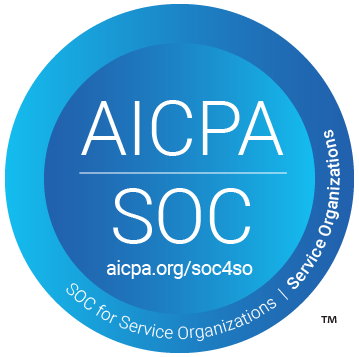Cloud governance now sits near the top of executive priorities for organizations running cloud or hybrid estates, driven by sharper concerns about security, compliance, and spend control.
Grand View Research reports the cloud infrastructure entitlement management market had hit USD 1.68 billion in 2024 and could expand at a 37.1% CAGR through 2030.
That pace raises the bar for governance frameworks that can keep up with shifting risks and financial pressure. Read on to understand how governance improves control and clarity. The right guardrails turn cloud ambition into measurable, repeatable outcomes.
What is cloud governance?
Cloud governance sets up how organizations direct and regulate use, access, and standards across cloud or hybrid environments, ensuring consistency, compliance, and clarity. It gives structure to:
- permissions;
- cost controls;
- performance guidelines; and
- policy enforcement in operational workflows.
This structure is also what separates a secure cloud from a vulnerable one. Good governance actively hardens defenses by catching and fixing misconfigurations that attackers could exploit. It addresses insider risks by making sure people only have access to what they absolutely need, limiting the damage from a compromised account or a simple human error.
Against external threats, it acts as a gatekeeper, enforcing rules about data encryption and network access to keep unauthorized parties out.
Beyond structure, cloud governance supports proactive decisions by aligning access rules with business needs, enforcing compliance policies, and controlling costs before inefficiencies arise. It also adapts to evolving regulations and technological shifts to sustain resilience in complex environments, nurturing trust across teams, and operations.
What are the key pillars of cloud governance?
The foundation of cloud governance rests on several interconnected pillars that guide steady and compliant operations. Each dimension shapes how access, spending, performance, resources, and security align with organizational goals and regulations.
1. Policy management
Policy management defines standards for access, configuration, and usage across environments. It ensures that rules reflect compliance demands and business priorities.
Embedding policy design early prevents drift and inconsistency, while also creating a culture of accountability. Effective governance requires frequent reviews of policies, aligning them with evolving regulations and technology updates to maintain relevance over time.
2. Security and compliance
Ensuring security and compliance means enforcing encryption, access controls, audit trails and threat detection across systems.
Governance frames how these defenses align with regulatory requirements and internal obligations, safeguarding data integrity and legal alignment.
Continuous monitoring, periodic audits and proactive threat intelligence elevate the maturity of security practices, ensuring organizations adapt quickly to new risks without interrupting operations.
3. Cost management and optimization
Controlling spend demands budgets, monitoring, and cost governance embedded into everyday workflows. Governance pushes accountability for costs into design and operations, not only after deployment, preventing idle assets and overrun budgets.
Detailed allocation models and timely alerts equip decision-makers to spot waste early, reassign funds effectively, and support sustainable cloud adoption strategies.
4. Resource management
Resource management delivers visibility into assets and ensures consistent tagging, configuration and lifecycle oversight. It prevents shadow resources from slipping through, enabling accurate governance and avoiding unattended or misallocated deployments.
Standardizing naming conventions, ownership assignment and lifecycle reviews ensures resources remain aligned with business objectives, and compliance needs throughout their usage.
5. Performance monitoring and reporting
Tracking performance enables governance to uphold service standards, capacity expectations and reliability. Governance embeds accountability and reporting, ensuring cloud environments run efficiently and transparently.
Detailed dashboards and regular reports strengthen communication across technical and business teams, creating shared visibility and encouraging proactive adjustments to maintain consistent service quality.
What are the common challenges in cloud governance?
Despite its importance, cloud governance often runs into hurdles that can undermine clarity or control, especially as infrastructures expand and diversify across providers.
Lack of visibility across cloud environments
When teams cannot fully see how workloads, assets or access streams flow across public, private or hybrid infrastructure, enforcing consistent governance becomes nearly impossible.
Blind spots create gaps in control and risk management. Limited visibility also leads to inefficiencies in cost allocation, as unused or misconfigured assets may remain hidden and consume resources without oversight.
Inconsistent policy enforcement
When policy creation and application happen in silos or after deployments, compliance breaks, and rules become patchy. A governance framework must ensure rules travel with workloads across environments to maintain uniform oversight.
Automation becomes essential, embedding policies into deployment pipelines, so enforcement remains consistent and reliable. Without this, discrepancies accumulate, creating risks for both compliance and security.
Shadow IT and uncontrolled access
Unofficial services and unmanaged accounts undermine governance by bypassing policy, auditing and cost controls. Without visibility or ownership, these off‑book resources create unknown vulnerabilities and inefficiencies.
Shadow IT also generates uncertainty about accountability, as no team clearly owns the risks or expenses. Addressing this requires entitlement management, approval workflows and strong identity controls to close gaps before they expand.
Rapidly changing compliance requirements
Regulations shift quickly, making policy alignment difficult across global operations or hybrid models. Governance frameworks must adapt with speed to stay ahead of legal complexity.
Dynamic compliance monitoring, frequent audits, and proactive updates reduce penalty risks and preserve trust with regulators and customers.
By embedding adaptability into governance, organizations sustain compliance even under constant change.
Cloud governance brings structure to complex cloud environments by balancing access, cost, performance, and compliance under one coherent framework. It helps organizations reduce risk, enforce policies consistently, and gain visibility across dynamic operations.
For teams navigating growth and complexity, integrated governance offers the clarity and discipline needed to scale with confidence. Stay here, on The Ksquare Group blog, to find more content on this and other subjects.
Summarizing
What is meant by cloud governance?
Cloud governance is the framework of policies, roles, and controls guiding how an organization uses cloud services. It aligns security, compliance, cost, performance, and identity with business goals, and assigns accountability across teams.
What are five disciplines of cloud governance?
Five disciplines: cost control, security and compliance, resource management, policy management, and performance monitoring. Together they set standards, define ownership, and guide decisions so teams deploy and run cloud workloads securely.
What is the difference between IT governance and cloud governance?
IT governance defines decision rights, accountability, and controls across technology. Cloud governance applies those principles to public, private, or hybrid clouds, turning policy into guardrails for access, cost, performance, and compliance.
image credits: Freepik



